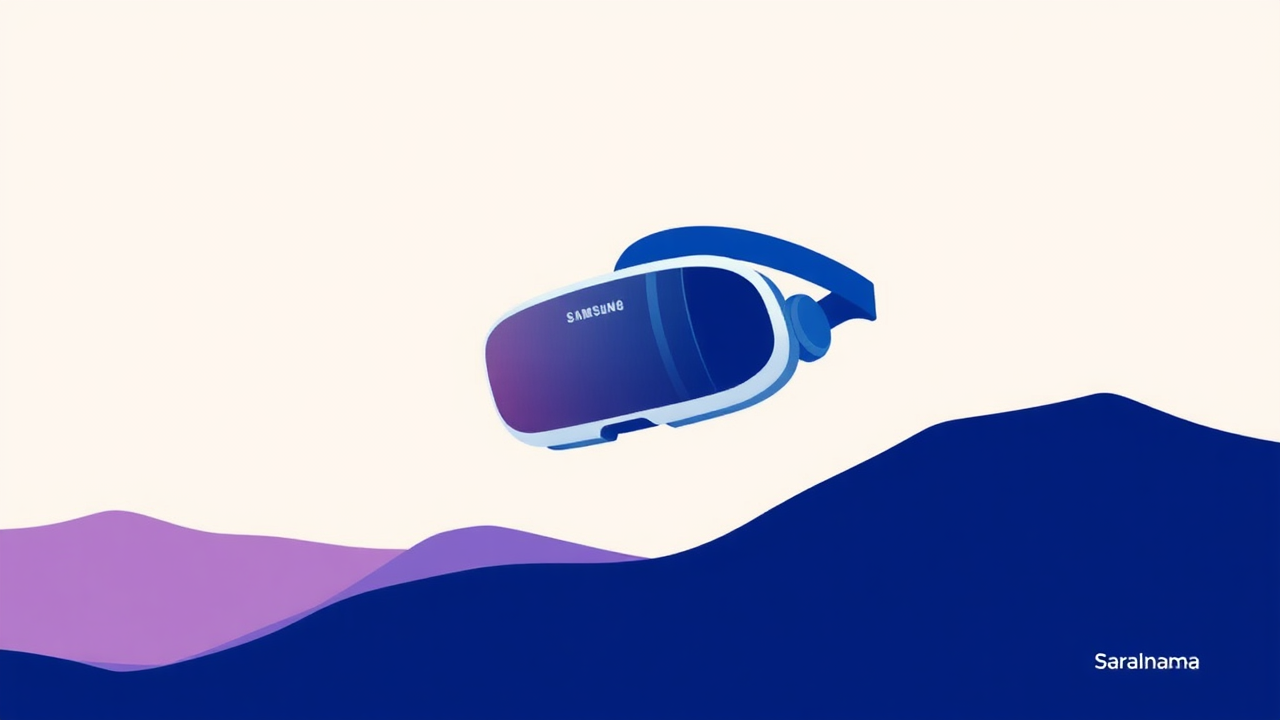Samsung is preparing to expand the availability of its Galaxy XR extended reality headset to new global markets in 2026. Initially launched in South Korea and the United States, the device aims to compete with premium XR products like the Apple Vision Pro and Meta Quest Pro. Priced at $1,799, the headset features advanced technologies including micro-OLED displays, Snapdragon XR2+ Gen 2 chipset, and Google's Android XR platform.

Samsung's Strategic Global Expansion Plan for XR Technology
The Galaxy XR represents Samsung's deliberate strategy to enter the extended reality market through a carefully planned, phased approach. By initially limiting the headset's availability to select markets like South Korea and the United States, Samsung is gathering critical user feedback and understanding market dynamics. Reports suggest the company will expand to at least four additional regions in 2026, including Germany, France, Canada, and the United Kingdom. This measured expansion allows Samsung to assess production capabilities, user reception, and the evolving landscape of XR applications and experiences. The approach demonstrates a calculated method of entering a complex and emerging technology segment, ensuring robust market penetration and product refinement before widespread global launch.
Advanced Features and Technological Capabilities
The Galaxy XR boasts impressive technological specifications that set it apart in the XR device ecosystem. Powered by the Snapdragon XR2+ Gen 2 chipset and running on Google's Android XR platform, the headset offers both virtual and augmented reality functionalities. Its micro-OLED displays provide high-quality visual experiences, while advanced input methods including eye, hand, and voice controls enhance user interaction. A standout feature is the integration of Google Gemini, which enables conversational interactions and contextual awareness. The device can analyze its surrounding digital and physical environment, offering users an interactive and intelligent experience. Compatibility with other Galaxy devices like phones, PCs, and TVs further extends its utility and ecosystem integration.
Battery Performance and User Experience Considerations
Samsung has addressed one of the critical challenges in XR devices – battery life – by offering relatively robust usage times. The Galaxy XR provides approximately two hours of general usage and 2.5 hours of video playback on a single charge. This performance metric is crucial for user satisfaction in a device category where battery endurance has traditionally been a significant limitation. The company's focus on optimizing power consumption while maintaining high-performance capabilities demonstrates a nuanced understanding of user needs in extended reality devices. By balancing technical sophistication with practical usability, Samsung aims to make the Galaxy XR an attractive proposition for both technology enthusiasts and professionals seeking immersive digital experiences.
Competitive Positioning in the XR Market
By launching the Galaxy XR, Samsung enters a competitive landscape dominated by established players like Apple and Meta. The device's $1,799 price point positions it as a premium product targeting serious XR enthusiasts and professional users. Its capabilities go beyond mere entertainment, offering potential applications in fields like design, training, remote collaboration, and immersive learning. The headset's multi-camera setup, contextual AI capabilities, and cross-device compatibility suggest Samsung is not just creating another hardware product, but building a comprehensive XR ecosystem. The gradual, strategic market expansion indicates a long-term commitment to developing and refining extended reality technologies.
Technical Specifications and Hardware Details
The Galaxy XR comes with a 16GB RAM and 256GB storage configuration, providing substantial memory and storage for complex XR applications. Its Snapdragon XR2+ Gen 2 chipset represents cutting-edge mobile computing technology specifically designed for extended reality experiences. The micro-OLED display technology promises high resolution, color accuracy, and energy efficiency. Multiple input methods – including eye tracking, hand gestures, and voice commands – offer users intuitive and versatile interaction modes. Google's Android XR platform ensures a robust software ecosystem and potential for third-party application development, making the device adaptable to various use cases.
Market Readiness and Consumer Adoption Potential
Samsung's measured approach to the Galaxy XR launch suggests careful consideration of market readiness. By initially targeting tech-forward markets like the US and South Korea, and planning expansion to European and North American regions in 2026, the company is testing consumer receptiveness to advanced XR technologies. The device's ability to provide conversational and contextually aware interactions could be a significant driver of adoption. Professionals in design, education, remote work, and entertainment are likely early target segments. The integration with existing Galaxy device ecosystems provides an additional incentive for Samsung's existing customer base to explore this new technology category.
Technological Innovation and Future Implications
The Galaxy XR represents more than just a new product; it signifies Samsung's commitment to pushing technological boundaries in extended reality. By combining advanced hardware like the Snapdragon XR2+ Gen 2 chipset with sophisticated AI through Google Gemini, the device hints at a future where digital and physical realities become increasingly seamless. The headset's ability to understand and interact with its environment suggests emerging trends in contextual computing and intelligent user interfaces. Samsung's investment in this technology indicates anticipation of significant growth in XR markets, potentially transforming how people work, learn, communicate, and entertain themselves in the coming years.
Global Market Expansion Strategy
According to industry reports, Samsung plans a deliberate, phased expansion of the Galaxy XR into new markets during 2026. The initial target regions include Germany, France, Canada, and the United Kingdom, with potential for additional markets based on production capacity and XR ecosystem development. This strategic approach allows Samsung to gauge market demand, refine product offerings, and build a robust global presence in the emerging extended reality technology segment. By carefully selecting markets known for technological adoption and innovation, Samsung aims to establish the Galaxy XR as a serious contender against established competitors like Apple Vision Pro and Meta Quest Pro.
Source: Link
